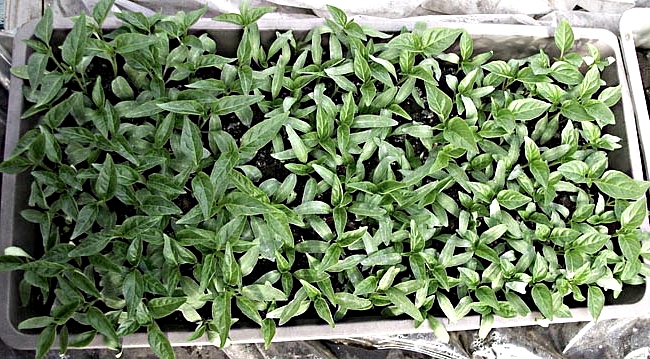 You can often hear that when growing peppers, you can not abuse nitrogen. The statement is true, but it must be remembered that the lack of this element negatively affects the growth of culture.
You can often hear that when growing peppers, you can not abuse nitrogen. The statement is true, but it must be remembered that the lack of this element negatively affects the growth of culture.
Pepper, like many other plants, cannot develop normally, build up green mass if there is insufficient nitrogen in its nutrition. This is especially often manifested on sandy and sandy soils.
You can fill the deficit with various additives, fertilizers, and one of them is urea. This is one of the most famous and widely used by gardeners mineral nitrogen-containing fertilizers.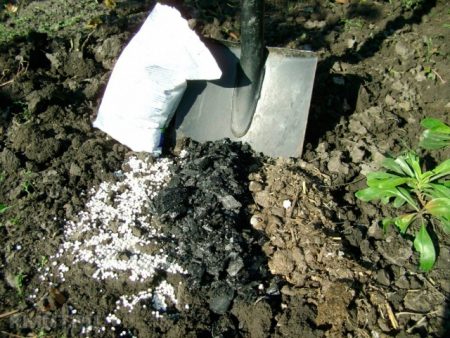
For the cultivation of vegetables, urea type B is used; another type is used in various industrial industries.
Content
Urea as a fertilizer for pepper - description
This fertilizer owes its colorful name to the production method, because before it was obtained from urine. After the opportunity appeared to synthesize the product chemically, another name appeared - urea, although the former is also used in everyday life.
For agricultural work, this fertilizer is produced in granular form, the color is white, less often transparent. Today, urea is also produced in the form of tablets that have a shell. This is of fundamental importance for the storage of fertilizers, since urea does not evaporate nitrogen in this form.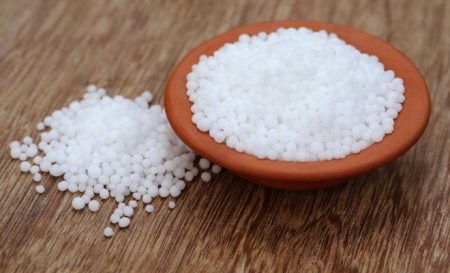
The composition of the product contains 46% of nitrogen useful for plants, and this is almost twice as much as in ammonium nitrate. For pepper, this fertilizer can be used for conventional root top dressing (dissolving in water), and planting in the soil, and for spraying.
Urea is highly soluble in water; no preliminary procedures are required. In addition, it is affordable and this also contributes to its demand among summer residents.
Characterization and properties of urea
The product is obtained through the combination of carbon dioxide and ammonia, the process takes place at high temperature. Fertilizer is a source of nitrogen, which is easily absorbed by peppers. It is important that the use of urea will be more effective and beneficial for pepper than, for example, ammonium nitrate. The thing is that when saltpeter is introduced, a very strong oxidation of the soil occurs, while with the addition of urea this oxidation is not so significant. Peppers respond better to urea, and this must be taken into account. The ammonium carbonate contained in the product evaporates very quickly, therefore, the rules for storing fertilizer must be observed, as well as pellets to be embedded in the soil when used dry. Fertilizer can be applied on all types of soil, and the dosage must be observed.
Why use urea?
- Fertilizer promotes the growth of peppers.
- A good and intensive increase in green mass is provided.
- Proper use of the additive can significantly increase the yield of the crop.
At the same time, an excess of nitrogen (the introduction of urea without observing the norm) leads to the formation of a large number of leaves on the bushes, "fattening" of peppers. Such plants have a thick and powerful stem, dark green spreading branches, leaves, a small number of flowers and ovaries. The fruits of peppers overfed with nitrogen ripen poorly, they are few on the bushes and then they most often rot.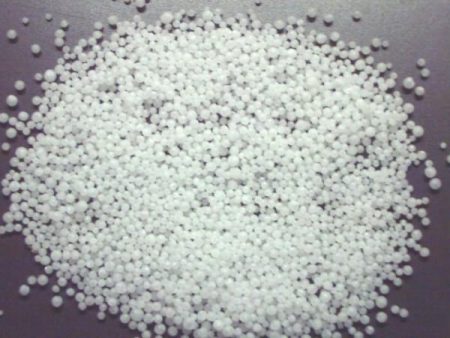
Urea Usage Guidelines
A mineral supplement is used when growing peppers, strictly observing the norms. It is very important not to oversaturate the soil with nitrogen, everything should be balanced.
The use of urea in such cases is shown:
- Peppers do not grow well; weak shoots are observed.
- Leaflets turn yellow and fall off.
- Peppers look weak, soiled.
You can use urea in an aqueous solution, pouring peppers under the root, you can spray it, but you must take into account its compatibility with other elements. Urea is combined with sodium nitrate, potassium sulfate, but it can not be used with superphosphate, calcium nitrate. It is necessary to make fertilizer mixtures so that all the components in it combine to the maximum and give an effect.
To increase soil fertility, urea is introduced in spring, either in liquid form or in dry form. For aqueous solutions use special utensils (tanks, buckets), which are used only for working with fertilizers. It is important to comply with the dosage of mineral additives, especially if the soil was well seasoned with humus or manure.
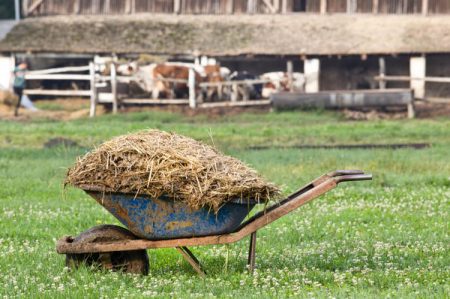
Feeding steps
When should urea be used when growing peppers? This fertilizer is used at all stages, but only taking into account the phase of plant vegetation, the dose is adjusted. During the growing of seedlings, after transplanting peppers into the greenhouse, the introduction of nitrogen will be effective in greenhouses, but during the flowering period and at the beginning of fruiting, the nitrogen fraction is reduced.
Seedling and soil preparation
Loose and permeable soil is exactly what you need to get high-quality seedlings. At the same time, it must contain all the necessary batteries, including nitrogen. Pepper seedlings (provided that the soil was well fertilized) does not need urea top dressing. For them, you can spend one or two treatments with urea leaflets. The composition is prepared by dissolving 1-2 liters of potassium permanganate granules and several grams of urea in a liter of water.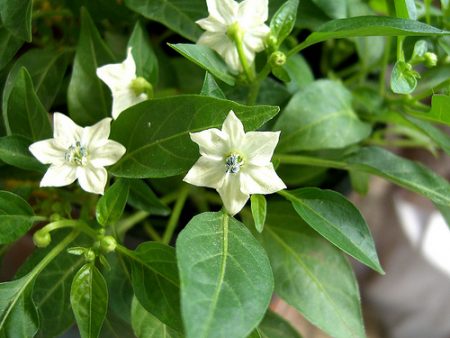
The first time they are sprayed when 2-3 real leaflets appear at the peppers, the second time - after 14-16 days. Water temperature should not be lower than + 20ºC, it is better to use melt water.
Plants are sprayed very carefully, after which the soil is slightly loosened.
The soil in a greenhouse or in a bed of peppers is prepared in the fall. They dig it up, add rotted manure, humus, superphosphate can be used from mineral additives. If the soil on the site is peaty, then it is necessary to add humus, to add turfy soil to the greenhouse. Pepper does not like peat soils, it often hurts on them, so it is very important to add all the necessary additives to the soil.
About two weeks before the alleged planting of plants from the house into the greenhouse, the following are added to the ridges:
- ash (1-1.5 cups);
- carbamide (one teaspoon each).
Doses are given per square meter, there is no need to exceed the norm. Then the soil is again dug up, leveled and already before the plants are planted, holes are made according to the scheme.
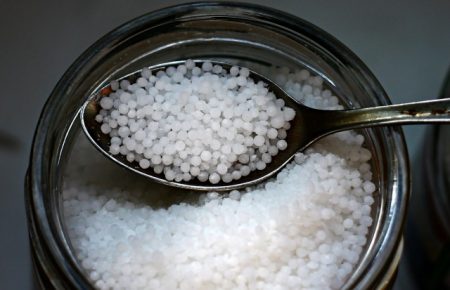
As soon as the peppers are planted, a difficult period of plant adaptation begins. At this time, for about a week, for a better development of the root system of the plant, it is not recommended to water it. The first watering - after 6-7 days, with warm, settled water and under the root. It is also good to water peppers in special grooves, and fertilizer solutions can also be applied there.
The first feeding is in 16-18 days, and nitrogen will dominate here. About 10 grams of urea are bred in a ten-liter bucket of warm water, 5 grams of superphosphate are added. It is necessary that all fertilizers dissolve well and only after that produce watering.The nutrient solution consumption is 1 liter per bush (for stunted peppers, the volume can be reduced to 0.5 liters per plant).
The following dressing with the use of urea is carried out before the flowering of peppers, in the budding phase. The amount of urea is left, as in the previous feeding, the dose of superphosphate is increased to 30 grams, and potassium salt (a teaspoon) is also added.
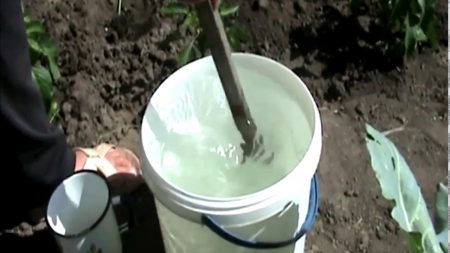
Rules for feeding during flowering
Perhaps not everyone knows that peppers bloom and bear fruit in “waves.” The first flowers give an ovary, fruit is being formed, they are ripening, and peppers can be removed from the bush in the stage of technical ripeness. This will enable the plant to regain color and form the next batch of fruits.
At a time when the pepper bushes begin to bloom with small white flowers, the plants also need to be fed. But potassium and phosphorus come to the fore, and the amount of nitrogen should be small. This does not mean at all that urea is not used during this period, it simply reduces its dose.
Compounds with urea (one teaspoon each), superphosphate (30 grams), potassium sulfate (10 grams) are used. Such complex formulations are more effective than the introduction of individual additives, since they fully satisfy peppers in their diet, and at the same time there is no risk of overfeeding the plants.
As soon as the first "wave" has passed, peppers again need additional nutrition. So that the plants do not deplete, so that flowering and fruit formation are in full swing, it is necessary to add nutrient solutions with nitrogen, and it is best to combine organics and minerals.
Urea can be mixed with water infusion of mullein, bird droppings, then let it brew and pour peppers. But with this option, the introduction of ash under the peppers is also mandatory.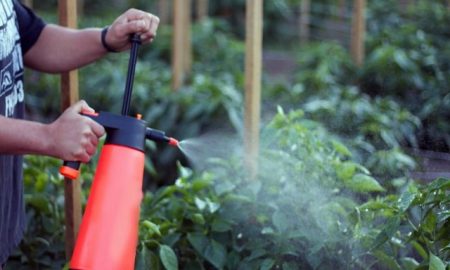
If, after the first harvest, the plants look a little tired and exhausted, it is recommended to give foliar top dressing. Peppers respond well to spraying on leaves, since in this case the elements are absorbed quickly, plants literally “come to life”, grow better.
Composition: take a teaspoon of urea on a bucket of water. Sprayed through a spray bottle, the best time is early morning. This allows you to avoid burns on the leaves from sunlight, and the absorption of nutrients is better. It is important to alternate root spraying with root spraying, and in the same way, when preparing the compositions, the dosage is strictly observed.
For peppers that grow in open ground, top dressing on leaves is carried out in clear weather, focusing on the weather forecast. If weather forecasters promise rain, it is better to postpone the procedure, otherwise there will be no effect from it.
Output
Urea, as a source of nitrogen, is a very important and useful fertilizer for peppers. But when using it is necessary to follow the methods and doses of application, remember that peppers (like any other vegetables) are better to undernourish than to allow an excess of "chemistry".
Reviews
Svetlana, Stupino
I use a little urea for all the vegetables. I do not feed seedlings of peppers, but in the greenhouse I make sure to feed them. But I always mix urea with superphosphate, and water only in such formulations. Under the apple trees I bring in the holes, only under the young I make a hole with a chopper, pour water with urea, bury it. Then you need to water well, and even better to make such holes before the rains.
Alexey, Vologda region
Inexpensive and fairly easy to use fertilizer. I bring it directly to the soil when I dig the beds in the spring. I sprinkle the granules (well, so, by eye) and then close them into the soil. I try not to overdo it, because then everything is rushing like by leaps and bounds, and there will be few ovaries. I do not use urea for seedlings, I use only ready-made compounds, there are already all the necessary elements there.




 Calorie pepper stuffed with meat and rice - BZHU per 100 grams
Calorie pepper stuffed with meat and rice - BZHU per 100 grams Gorky pepper - the best varieties for open ground
Gorky pepper - the best varieties for open ground Hot pepper seeds - the best varieties for open ground and reviews
Hot pepper seeds - the best varieties for open ground and reviews Capsicum tincture for hair - how to use and reviews
Capsicum tincture for hair - how to use and reviews